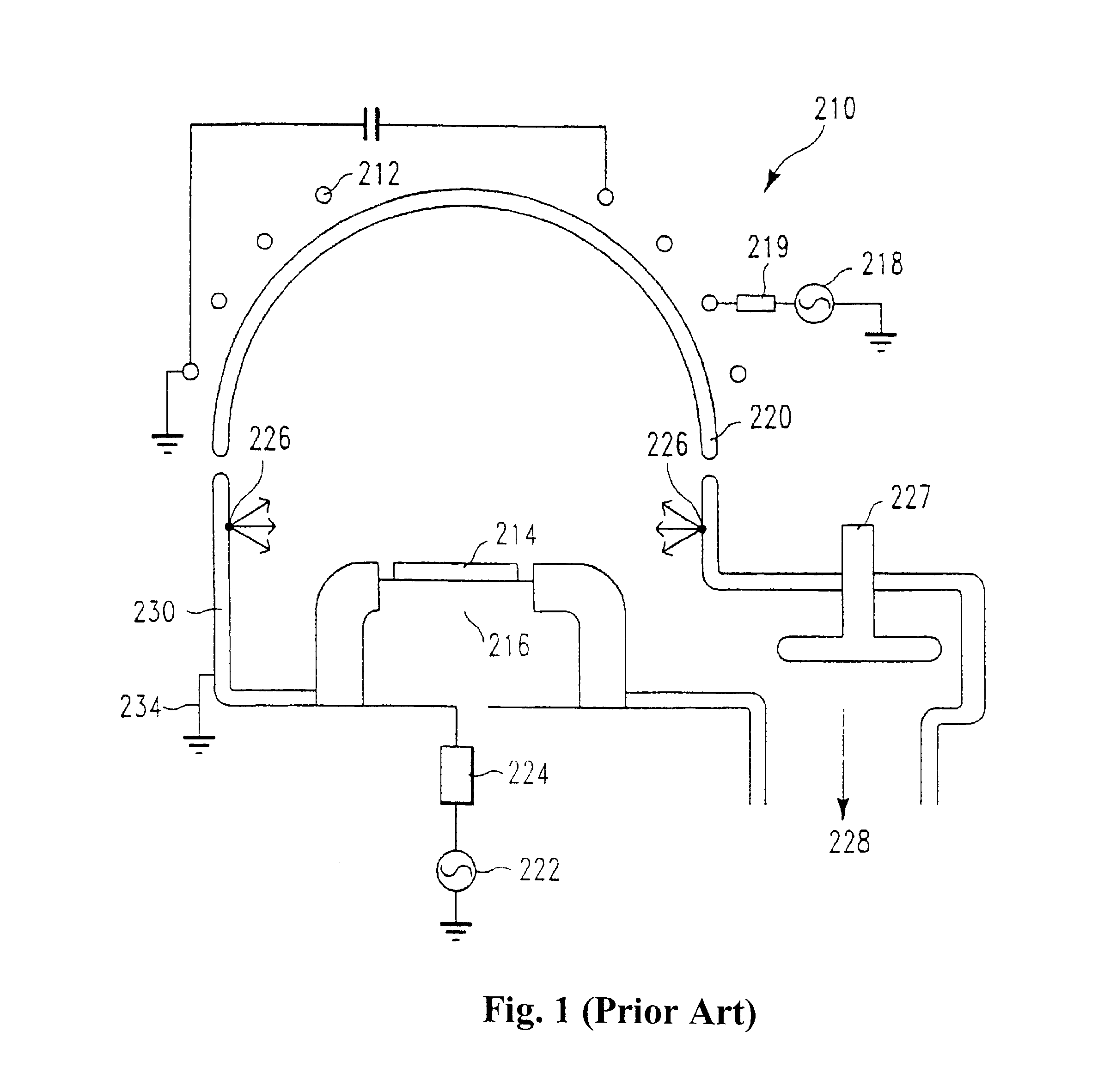High resist-selectivity etch for silicon trench etch applications
a trench etch and high resist-selectivity technology, applied in the direction of basic electric elements, semiconductor/solid-state device manufacturing, electric devices, etc., can solve the problems of high volume devices, undesirable associated costs, and high cost of low cost (and hence low margin)
- Summary
- Abstract
- Description
- Claims
- Application Information
AI Technical Summary
Benefits of technology
Problems solved by technology
Method used
Image
Examples
Embodiment Construction
As a preface to the detailed description, it should be noted that, as used in this specification and the appended claims, the singular forms "a", "an", and "the" include plural referents, unless the context clearly dictates otherwise.
All percentages (%) listed for gas constituents are % by volume, and all ratios listed for gas constituents are volume ratios.
The term "selectivity" is used to refer to a) a ratio of etch rates of two or more materials and b) a condition achieved during etch when etch rate of one material is increased in comparison with another material.
Preferably, etching is carried out in a DPS (decoupled plasma source) etching system. However, it should be appreciated that other inductively coupled plasma sources can be used. Such plasma sources are capable of producing high-density plasmas (e.g., ion densities of 10.sup.11 to 10.sup.12 cm.sup.-3).
A schematic diagram of one such system, which is disclosed in U.S. Pat. No. 6,074,954, the entire disclosure of which is ...
PUM
 Login to View More
Login to View More Abstract
Description
Claims
Application Information
 Login to View More
Login to View More - R&D
- Intellectual Property
- Life Sciences
- Materials
- Tech Scout
- Unparalleled Data Quality
- Higher Quality Content
- 60% Fewer Hallucinations
Browse by: Latest US Patents, China's latest patents, Technical Efficacy Thesaurus, Application Domain, Technology Topic, Popular Technical Reports.
© 2025 PatSnap. All rights reserved.Legal|Privacy policy|Modern Slavery Act Transparency Statement|Sitemap|About US| Contact US: help@patsnap.com



